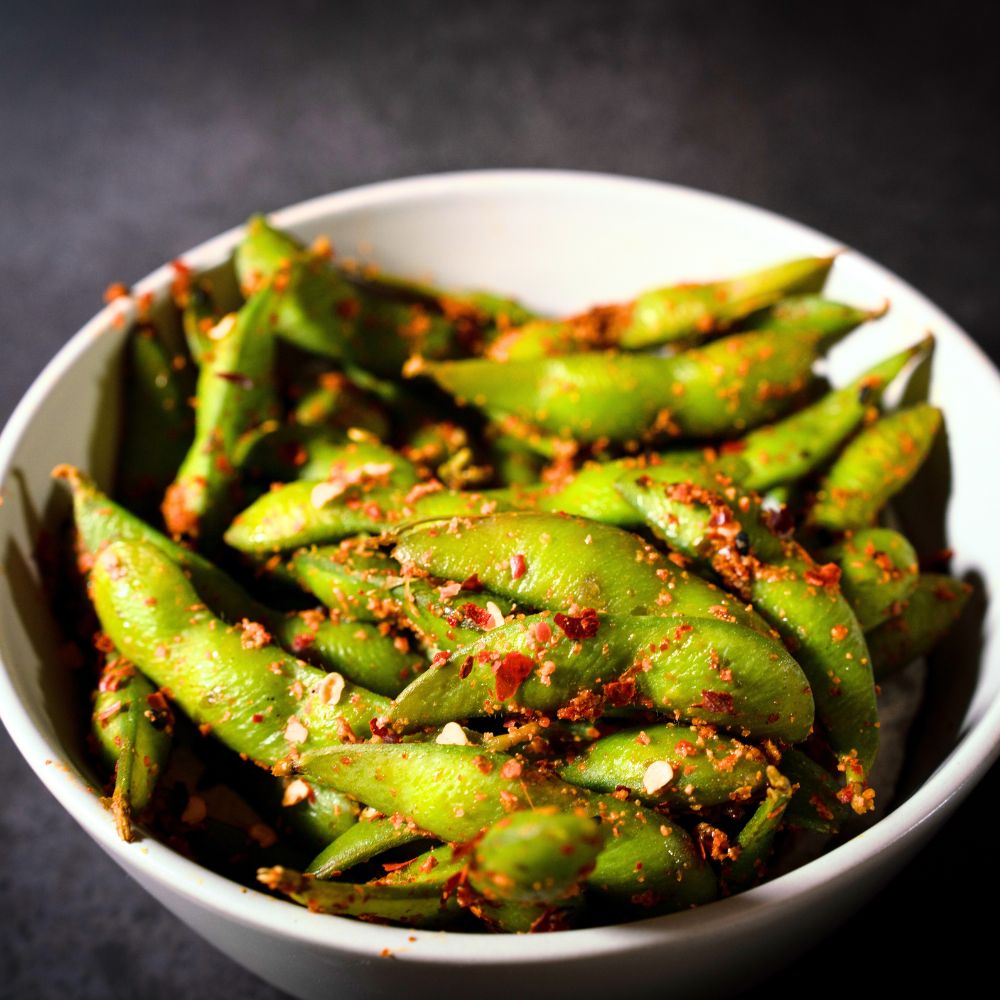When it comes to plant-based diets, protein is a vital nutrient that often needs special attention. While many associate high protein intake with meat and dairy, certain vegetables are surprisingly rich in protein. Here’s a list of the vegetables with the highest protein content, starting from the highest.
1. Edamame (Soybeans)
- Protein Content: 18.5 grams per cup (cooked)
Edamame, young soybeans, are a powerhouse of protein. They are not only high in protein, but also provide essential amino acids, making them a complete protein source. Edamame is a great snack on its own or can be added to salads, stir-fries, and grain bowls.
2. Lentils (Technically a legume)
- Protein Content: 18 grams per cup (cooked)
While often classified with vegetables, lentils are technically legumes. They are an excellent source of protein, fiber, and various nutrients. Lentils can be used in soups, stews, salads, and as a meat substitute in various recipes.
3. Chickpeas (Garbanzo Beans, also a legume)
- Protein Content: 14.5 grams per cup (cooked)
Chickpeas are versatile and nutrient-dense, making them a popular ingredient in salads, hummus, and various Middle Eastern dishes. They are high in protein and fiber, helping to keep you full and satisfied.
4. Green Peas
- Protein Content: 8 grams per cup (cooked)
Green peas are not only rich in protein, but also provide vitamins A, C, and K. They can be added to soups, casseroles, or served as a side dish. Frozen peas are just as nutritious and convenient.
5. Spinach
- Protein Content: 5.4 grams per cup (cooked)
Spinach is known for its high iron content, but it also offers a good amount of protein. When cooked, its volume reduces significantly, making it easy to add to a variety of dishes like omelets, pasta, or smoothies.
6. Kale
- Protein Content: 4.3 grams per cup (cooked)
Kale is another leafy green that packs a protein punch. Rich in vitamins and antioxidants, kale can be used in salads, smoothies, or sautéed as a side dish.
7. Broccoli
- Protein Content: 4 grams per cup (cooked)
Broccoli is a nutritious vegetable that provides a decent amount of protein along with fiber, vitamins C and K. It can be steamed, roasted, or added to stir-fries for a healthy boost.
8. Brussels Sprouts
- Protein Content: 4 grams per cup (cooked)
Brussels sprouts are little yet powerful when it comes to nutrition. They are rich in protein and can be roasted, sautéed, or added to salads for a crunchy texture.
9. Cauliflower
- Protein Content: 3 grams per cup (cooked)
Cauliflower serves as a versatile, low-carb substitute for grains and legumes. You can roast, steam, or rice it to enhance many dishes.
10. Asparagus
- Protein Content: 2.9 grams per cup (cooked)
Asparagus is not only a great source of protein, but also provides vitamins A, C, E, and K. It can be grilled, steamed, or roasted, making it a delicious side dish or salad ingredient.
Vegetables with the Highest Protein Content
| Vegetable | Protein per Cup (Cooked) | Notes |
|---|---|---|
| Edamame | 18.5 g | Complete protein, great snack |
| Lentils | 18 g | High in fiber and nutrients |
| Chickpeas | 14.5 g | Versatile, used in hummus |
| Green Peas | 8 g | Rich in vitamins A, C, and K |
| Spinach | 5.4 g | High in iron and protein |
| Kale | 4.3 g | Packed with antioxidants |
| Broccoli | 4 g | Fiber and vitamins C, K |
| Brussels Sprouts | 4 g | Crunchy and nutrient-dense |
| Cauliflower | 3 g | Low-carb grain substitute |
| Asparagus | 2.9 g | Vitamins A, C, E, and K |
Conclusion
While vegetables are generally not as high in protein as meat and legumes, they can still contribute significantly to your daily protein intake. Edamame, lentils, and chickpeas lead the way as the highest-protein options, followed by green peas, spinach, and others. Incorporating a variety of these protein-rich vegetables into your meals can help support your nutritional needs, whether you’re a vegetarian, vegan, or simply looking to eat healthier.
Frequently Asked Questions (FAQ)
Technically, lentils belong to the legume family, but people often group them with vegetables because they offer similar nutrition and cooking uses.
Technically, lentils belong to the legume family, but many people group them with vegetables because of their nutrition and uses in cooking.
While vegetables contain protein, vegetarians usually combine them with legumes, nuts, and grains to meet daily protein needs effectively.
Add vegetables like spinach, broccoli, or peas to soups, salads, stir-fries, and smoothies for a protein boost.
Cooking can reduce volume but often makes protein more accessible; for example, cooked spinach offers more protein per serving than raw spinach due to reduced water content.

